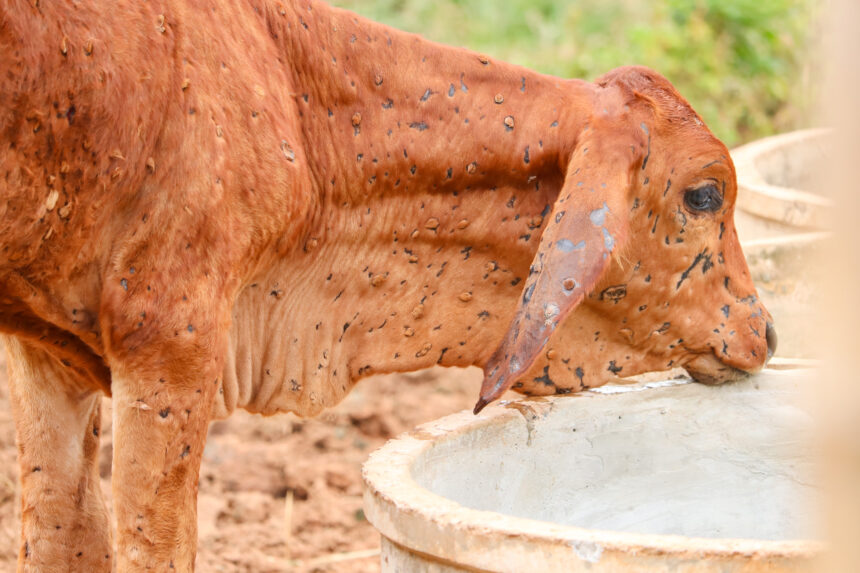Let me once again welcome you to another edition of your weekly Talk to the Vet column, where we discuss and share tips on everything that has to do with animal healthcare. Today, we will look at the ongoing Lumpy skin disease outbreak that has affected farmers in some parts of the country.
I always say that it is important for farmers to have their ears and eyes on the group and be on the lookout for what is happening worldwide, especially when it comes to news that affects them as farmers.
There is currently an outbreak of Lumpy skin disease across villages in the Otjituuo, Okamatapati, Otjinene and Eiseb Block settlements. It is thus important for me to make use of today’s writing to educate and advise our esteemed farmers on the many serious effects of the Lumpy skin disease.
The Lumpy skin disease is an acute virus disease of cattle characterised by eruption of variably-sized skin nodules, oedema of the limbs and swelling of the superficial lymph nodes. It is a State Vet-notifiable disease, which means it has to be immediately reported to the nearest state veterinarian office once clinical signs are suspected.
Clinical signs include fever, lacrimation, hypersalivation and characteristic skin eruptions, increased nasal secretions, loss of appetite, reduced milk production, depression and reluctance to move.
Very few adult cattle die from Lumpy skin disease. However, there is a long period of debility, leading to loss of production. Up to 10% of affected calves may die, and pregnant cows may abort.
I must also caution our farmers not to confuse Lumpy skin disease clinical signs with other skin conditions such as Bovine herpesvirus 2 skin infection, photosensitisation, insect and tick bites, skin allergies and cutaneous tuberculosis.
For Lumpy skin disease, the nodules are well- circumscribed, round, slightly raised, firm and painful, and involve the entire cutis and the mucosa of the GI, respiratory and genital tracts.
The skin nodules contain a firm, creamy-grey or yellow mass of tissue. Secondary infection sometimes occurs, and causes extensive suppuration and sloughing. As a result, the animal may become extremely emaciated, and euthanasia may be warranted.
In time, the nodules either regress or necrosis of the skin results in hard, raised areas (sit-fasts) clearly separated from the surrounding skin. These areas slough to leave ulcers, which heal and scar.
Transmission
Capripox viruses are very resistant to inactivation and remain viable for long periods on or off the animal host. Transmission by direct contact with infected animals can occur at a low level but this is not considered a major method of spread. Most infection is thought to be the result of insect transmission. Many different types of blood-sucking insects are thought to be involved in the transmission, especially stable flies, mosquitoes, house flies and hard ticks; eg. Rhipicephalus and Amblyomma species.
Movement of infected animals is the main means by which Lumpy skin disease is spread to new areas. Thus, there are always movement restriction, as is the case in the affected areas of Otjituuo, Okamatapati, Otjinene and Eiseb Block right now.
A presumptive diagnosis can be made on the clinical signs, and to confirm the diagnosis, specimens should be collected. For live animals, the process involves collecting from sera, nodular fluid, scabs and skin scrapings or skin biopsies.
Meanwhile, at post-mortem; both fresh and fixed samples in formalin should be taken from skin lesions and lesions in the respiratory and gastro-intestinal tract.
Vaccination with attenuated virus offers the most promising method of control and is effective in halting the spread of the disease. The Lumpyvax vaccine is currently available and being used in Namibia.
Administration of antibiotics to control secondary infection, anti-inflammatories, tick treatments and good nursing care are highly recommended for those already affected. Please buy your vaccines and prevent the further spread of the Lumpy skin disease.
*For enquiries or suggestions on any topic that you would want covered please reach out at punamuza22@gmail.com or WhatsApp me at +264 81 723 4553.



